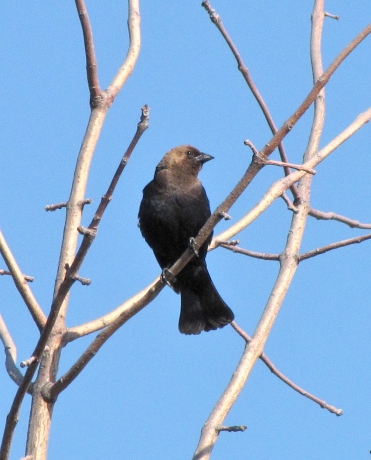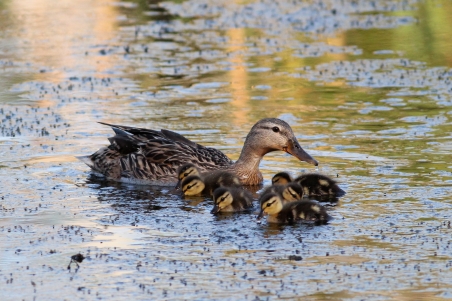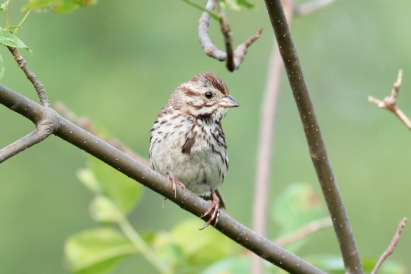Amazing and unusual techniques have evolved for the defense and propagation of species in the Animal Kingdom. For instance, the squid ejects its veil of ink to cover its retreat; the skunk squirts its malodorous spray; the porcupine has its quills; and the opossum feigns death, even with the the drooling mouth, when all else fails.
In the Avian class the Killdeer fakes a broken wing to lure predators away from the nest. Some species have a plumage that is perfect camoflage for their preferred habitat. The Fulmar is a stinking seabird whose name literally means “foul gull”, fending off any predator with a sense of smell. Both the bird and eggs reek, with the chicks having the additional defense of vomiting bright orange, sticky, foul matter whenever threatened. Burrowing Owl chicks, when left unattended in their burrows, make a rattlesnake-sounding hiss when they sense danger. It fools everyone except the rattlesnakes.
All of these seem logical, effective, and fair. But then you have brood parasitism. Now mother nature has gone too far–this really pushes the envelope of what should be allowed. Where is the Supreme Court when you really need it? Of course I say this in jest, but doesn’t it rile you a little to see this in action, and doesn’t it temp you to intervene?
Brood parasites are birds that lay their eggs in the nests of other birds, either of the same species (intraspecific),such as Goldeneye or Cliff Sparrows, or other species (interspecific) such a Brown-headed Cowbirds or European Cuckoo. This allows them to avoid the time and energy consuming chores of nest-building, incubation, feeding, etc. Some birds like the cowbirds use this technique exclusively, while others only occasionally, probably when overwhelmed with the thought of feeding one more chick. Luckily only 1% of the approximately 10,000 avian species have “learned” this shortcut and I hope it doesn’t spread.
The parasitizing bird has developed various devious techniques to pull off this charade. The female lays the egg quickly, to get in and out before the host female returns to the nest. She often cleverly kicks out one host egg in hopes the host doesn’t sense the newcomer. Can birds really count? The egg colorations are often, but not always, closely matched to the host eggs. The parasite eggs often have shorter incubation times and the parasite chicks grow quickly, monopolizing the food supplied by the host parents. Some parasite chicks have a mandibular spike which they use to puncture the other eggs or wound the rival chicks. The European Cuckoo chick has a depression on its back that allows him to hoist the other chicks to the rim and push them out of the nest, attempting to be the only surviving chick. Cowbird chicks, on the other hand, tend to tolerate their “siblings”.
Many brood parasites will only lay eggs in the nest of one or two similar host species, oftentimes the same species that raised them. The Cowbird, however, is not so picky, having 221 different known hosts. As many as 70% of Red-eyed Vireo nests are parasitized by Cowbirds. Song Sparrows have very similar eggs to the Cowbird and are usually fooled into being the parent, but Catbirds and Robins have clearly different plain eggs and usually reject the newcomer.
The host birds are not completely tolerant of this outrage. Many apparently can count and discard or puncture the new egg. Others work hard to build secretive nests and wage a staunch territorial defense. Some abandon the parasitized nest, while others just rebuild another nest on top of the first.
Host birds can be put into the categories of “Acceptors” or “Rejectors”. Some birds, such as the Eastern Phoebe, have clearly different eggs from a Cowbird but accept, incubate, and raise the parasite bird. This may be because rejection has its own risks. Apparently the parasite birds patrol the chosen nests, (the Mafia Hypothesis) and retaliate by destroying the nest and nestlings if its eggs or chicks are harmed. Call in the FBI.
In essence we are witnessing an evolutionary arms race between the reproduction techniques of brood parasites and the standard practices of the other birds. The Cowbirds seem to be doing quite well. A female may lay as many as 3 dozen eggs in host nests during the breeding season. Think of the free time for shopping and dining this bird acquires, with no need for nest building and parental chores. Even some fish and insects have adopted these techniques, but there clearly must be a downside since the phenomenon is still fairly uncommon. I’m rooting for the violated birds to fight back against this injustice. Do the birds feel as victimized by this as we humans would? Could there even be a “Nesting Code of Ethics” that will eventually win the day? Several million years from now we will know the answer.








I love your felicitous anthropomorphizing in this mini-essay. It is, indeed, something of an evolutionary puzzle. And we see it as well in mammals: other-species mothers (even fathers!) often featured on various blogs these days. When we lived in England, we saw in next-door fields how ewes rejected (by head-butting) lambs that were not their own. We learned that when a ewe gave birth to three lambs rather than the usual two, the farmer had to quickly put one with a ewe that had birthed only one lamb–quickly so that it would bond (by smell, we assume) almost at the start.
Incidentally, you could make more use of Spell Check (or your home proofreader), including the possibility that in your last paragraph you meant “rooting” rather than “routing.”
LikeLiked by 1 person
That’s very interesting about the ewes–I wonder if they “understand” that they have the milk and energy to care for two lambs, but not three. Thanks for the spell check–I made the correction.
LikeLike
I did not know about the Burrowing Owl chicks making to sound of a rattlesnake. I thought it funny you mentioned the snakes are not fooled. It would seem they are their greatest threat. I guess foxes might back off though. I do see many of the parasitizing birds in our area. It is sometimes comical to see the huge chick among the rest of them. Sadly, the resident chicks are often killed.
LikeLiked by 1 person
I’ve been fairly close to Burrowing Owls and their burrows, but haven’t personally heard the rattle. If I did I probably would have back off and been fooled. Thanks for reading the blog and commenting.
LikeLike